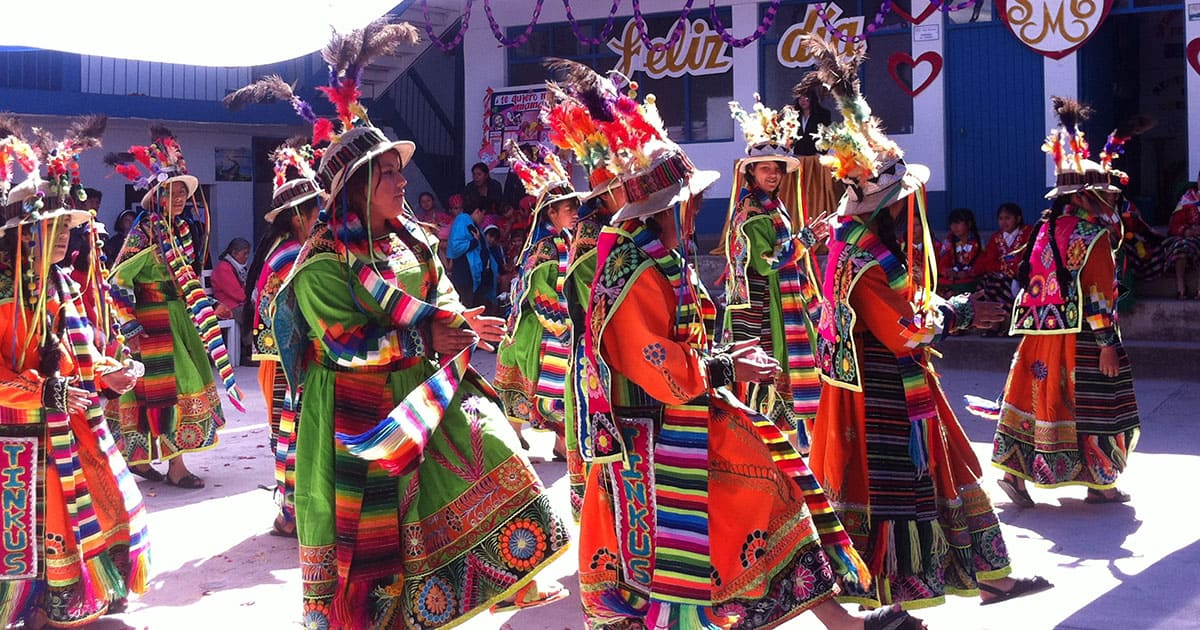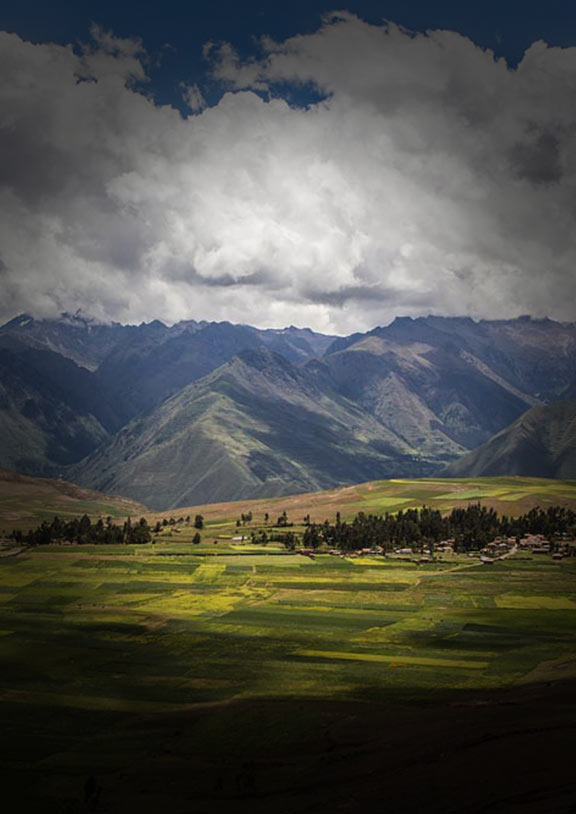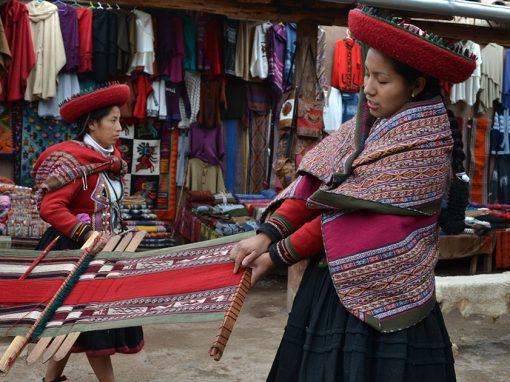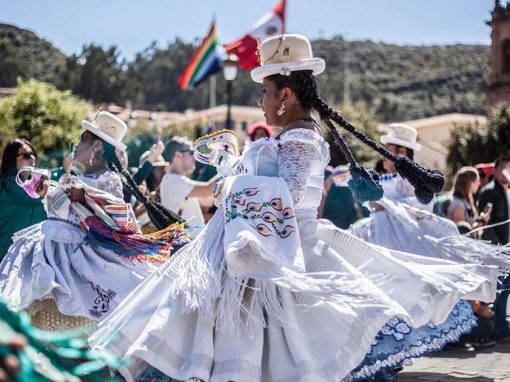Cusco’s folkloric music and dance traditions are cultural treasures. Dance plays a central role in the region’s year-round festival calendar. While each festivity tends to honor a different patron saint, the regional dances that are performed share many similarities.
Cusco dance: A look at 4 recurring themes
There are literally hundreds of different kinds of dances demonstrated during the many festivals of Cusco, but the following dances are commonly used to express various recurring themes.
1. Qhapaq Qolla
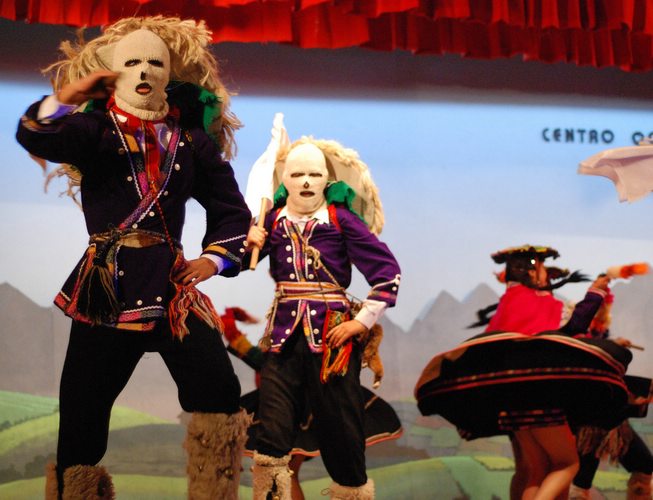 Qhapaq Qolla dancers wear white masks and sequined costumes to portray high status merchants.
Qhapaq Qolla dancers wear white masks and sequined costumes to portray high status merchants.
Photo by Celine Massa/Flickr
This dance represents traders and merchants from the southern Andes region known as the Peruvian Altiplano. During the colonial period, these traders provided a link between Cusco, the silver-based economy in the Bolivian highlands around Potosi, and the mercury-producing regions of the central Peruvian highlands. As a result, Cusco became the economic hub for a trans-American (if not global) mining network. The Qhapaq Qolla portrays the high status of these merchants with sequined costumes and white-faced masks. Contemporary participants of the Qhapaq Qolla typically hold positions of local or regional authority.
2. Negrillo
A dance that alludes to the presence of African slaves in Cusco during colonial times. This is a deeply religious dance, characterized by the use of black masks and dancing outfits decorated in rich baroque details. Negrillos are particularly popular in celebrations held in Coporaque, Madrigal, Santa Ana, and Santiago. The dance has a profoundly subversive meaning, as it aims to portray the economic lives and social behaviors of runaway and emancipated slaves. Interestingly enough, historical evidence suggests that runaway slaves, known as cimarrones, had a minimal presence in the Andean region. Yet their legacy seems to have an important role in the traditional dances of Cusco.
3. Qhapaq Ch’uncho
As opposed to the Qhapaq Qolla, the Qhapaq Ch’uncho is a warring dance. It reenacts battles between the Incas and populations from the Amazon rainforest (Antisuyo) before the arrival of Europeans. In its efforts to expand territorially, the Inca state ran into resistance from the jungle tribes to the north. In spite of multiple efforts to conquer this region and establish permanent Inca settlements, rainforest populations remained independent and only engaged the Inca state through commerce. Thus, the dance costumes in the Qhapaq Qolla include details such as macaw feathers brought to the Andes from the jungle.
4. Ukuku
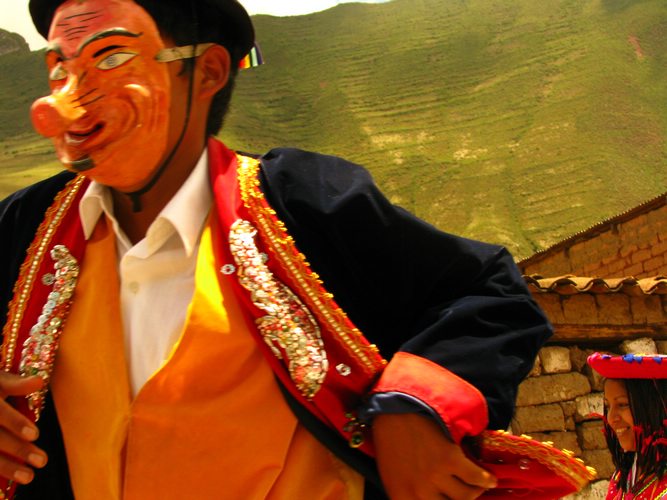 The fabled main character of the ukuku is a a pre-Columbian trickster with devilish ways.
The fabled main character of the ukuku is a a pre-Columbian trickster with devilish ways.
Photo by DaL/Flickr
Peru’s pre-Columbian, colonial, and republican histories merge together in the figure of the ukuku. The exact origins of the ukuku is unknown, although many stories say the main character represents a combination of a pre-Columbian trickster and a European devil. The ukuku dancer is dressed in a thick, stringy coat that resembles the fur of a wild animal, perhaps a bear. Unlike most other participants, the ukuku dances independently. As a trouble-making figure, he brings disarray and confusion to otherwise highly choreographed dance routines. In recent times, the ukukus have acquired a politicized role, often delivering messages that bring attention to contemporary social and economic issues in Peru.
Musical instruments: Fuel for the dance moves
Cusco belongs to a larger world of highly miscegenated musical traditions. The generic name huayno describes this wider musical heritage of the Peruvian Andes. Etymologically linked with the Quechua term huayñunakunay, meaning “dancing while holding hands”, this musical genre varies depending on the region where it is played. In spite of local diversity, similar instruments are used across regions. Flutes known as quenas and zampoñas are among the “traditional Andean” instruments. Other essential instruments with European origins include violins, harps, and guitars. Instrument-making workshops are popular in most of the Andean region, and Cusco-made string instruments – such as the charango – now circulate through international musical networks.
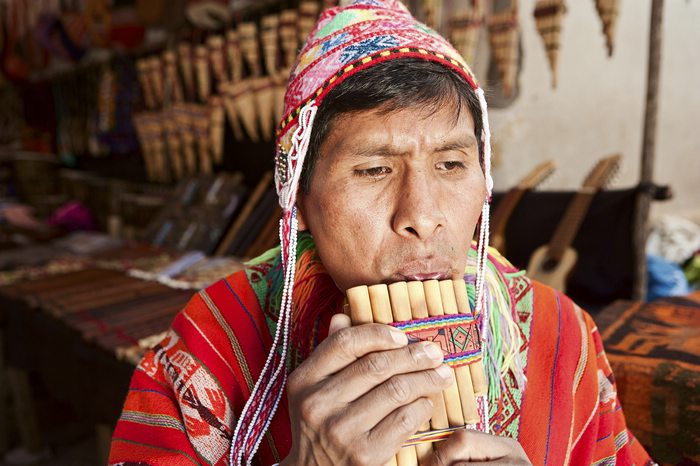 A Peruvian man playing a siku (panpipe) near Cusco.
A Peruvian man playing a siku (panpipe) near Cusco.
Photo by Discover Corps/Flickr
In 1942, Cusco singer Miguel Hurtado composed “Valicha”, the most well-known Cusco huayno. Miguel lived in Lima, and periodically visited Valeriana Huillca – also called Valicha – in the town of Acopia, in southern Cusco. The mobile life of Miguel and his love for Valicha also represents the cultural progressions of huaynos and its instruments as the twentieth-century unfolded. The lyrics, widely known by cusqueños, go as follows:
Cholita, flower of the highlands
Among the wild grasses
What would you be doing?
Surely you are singing
The memories of our sweet love
Plan your own Peruvian adventure to Cusco. Trip itineraries and different travel preferences are important variables to consider when figuring our the trip. Let our team of experts at Peru for Less help you! Talk to a travel advisor today.
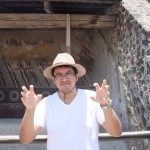
Former guide with Peru for Less and now professor of Latin American and Latino/a Studies at a college in the United States, Javier contributes his endless knowledge of Peru’s past and present.


